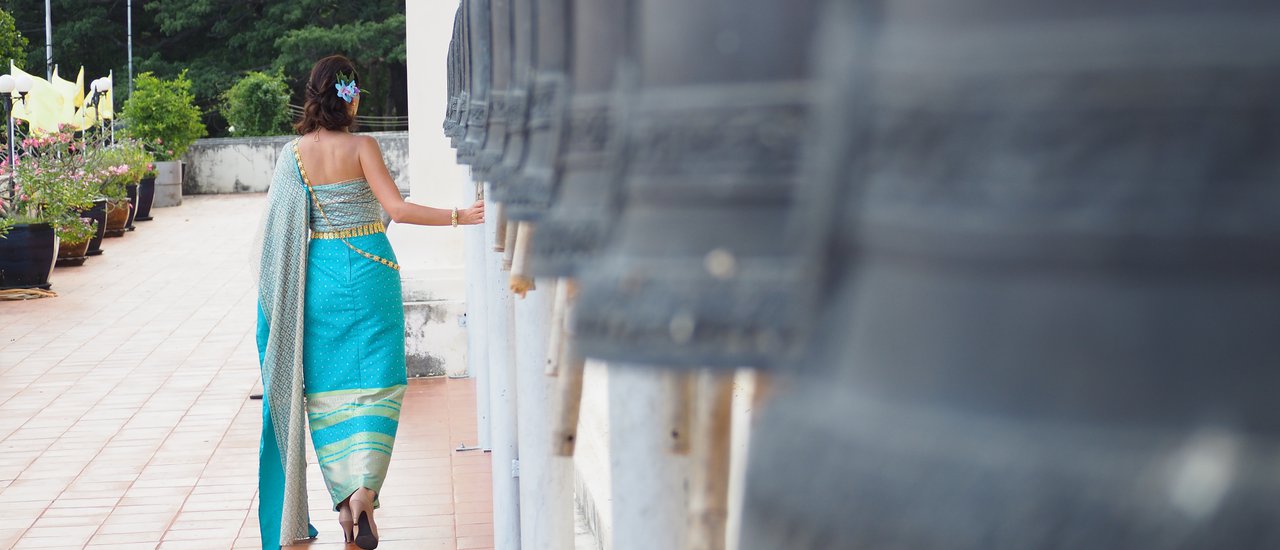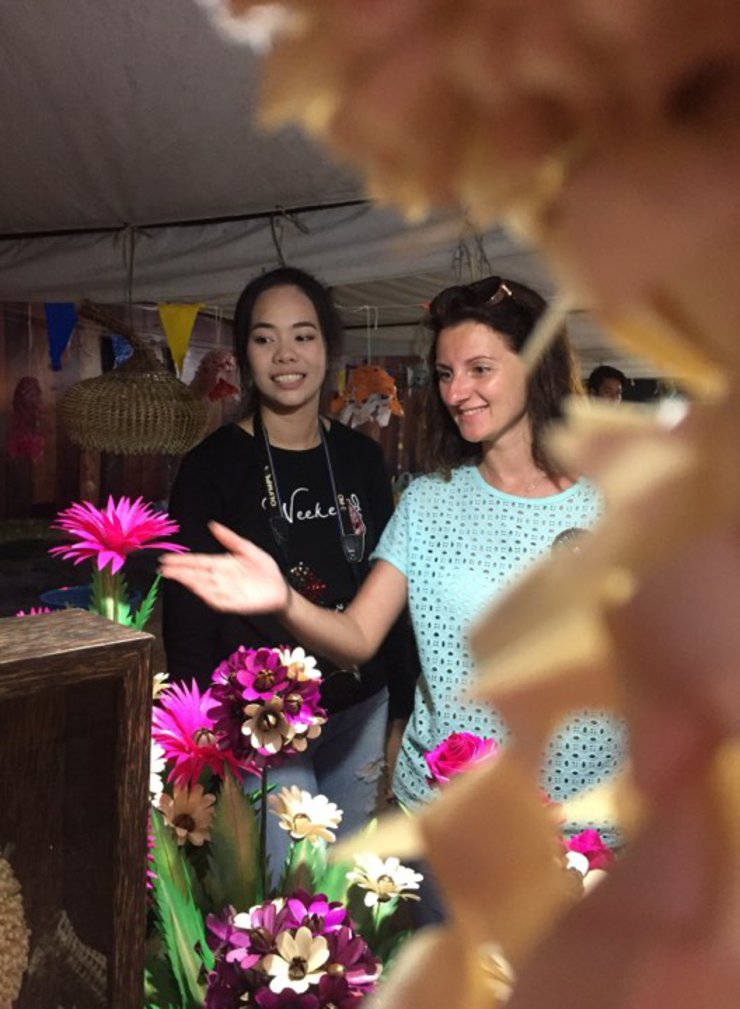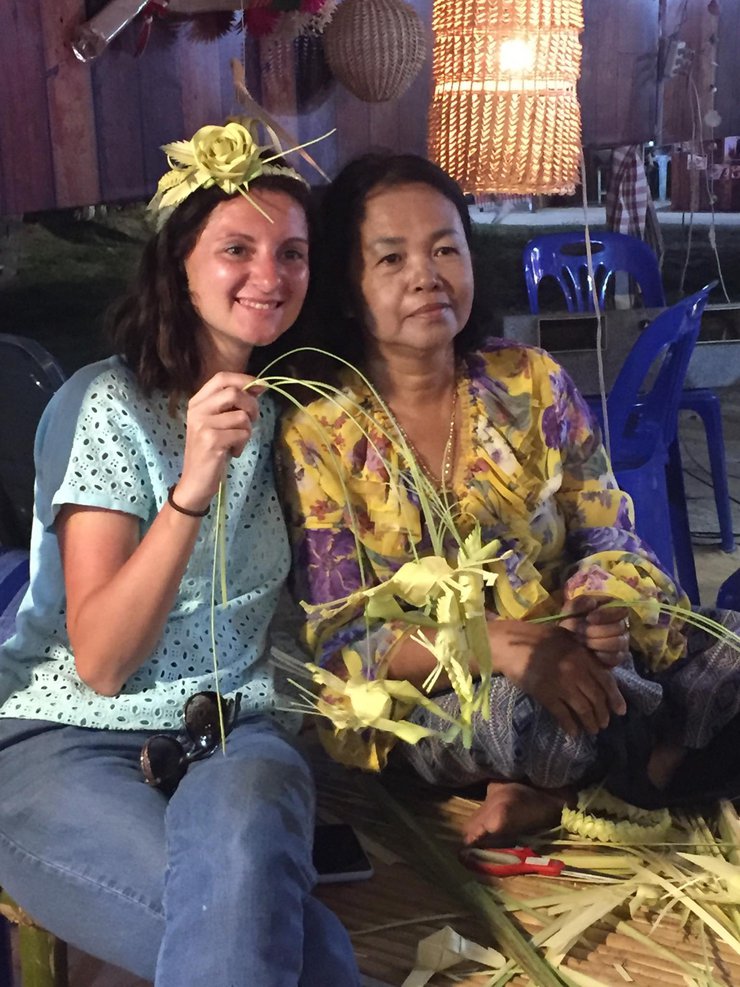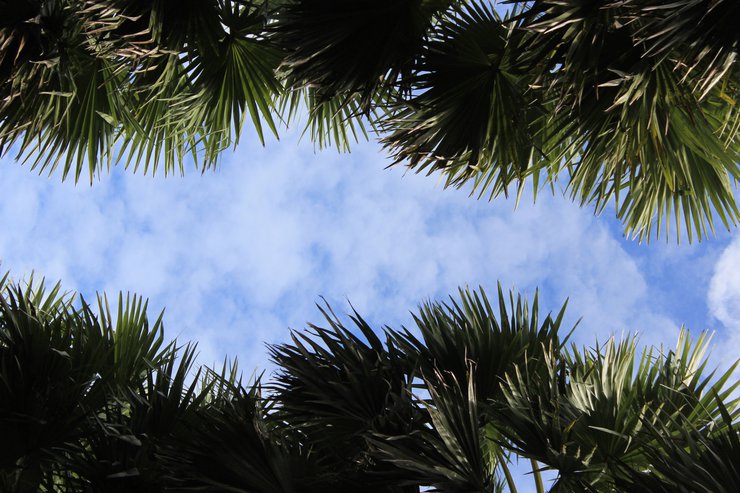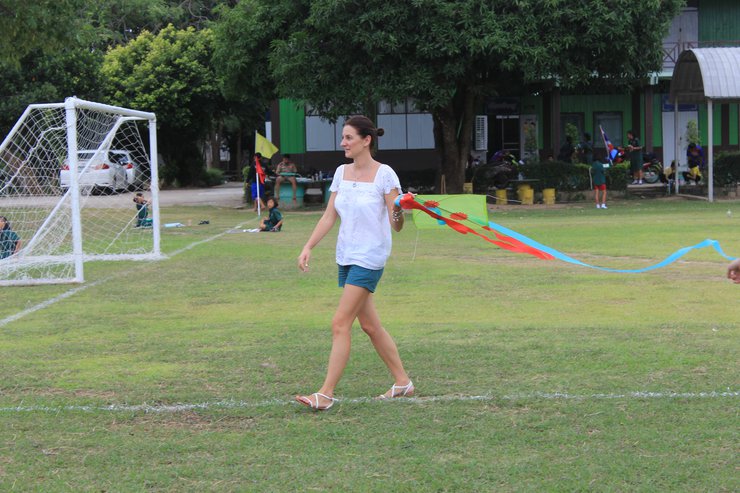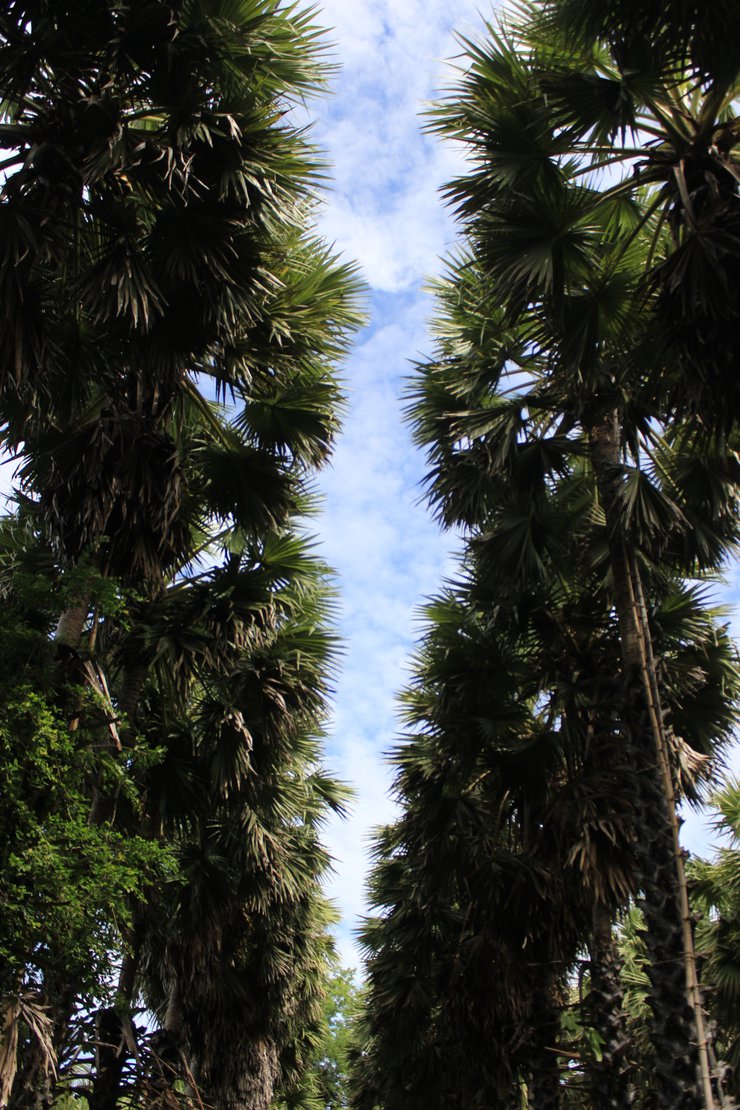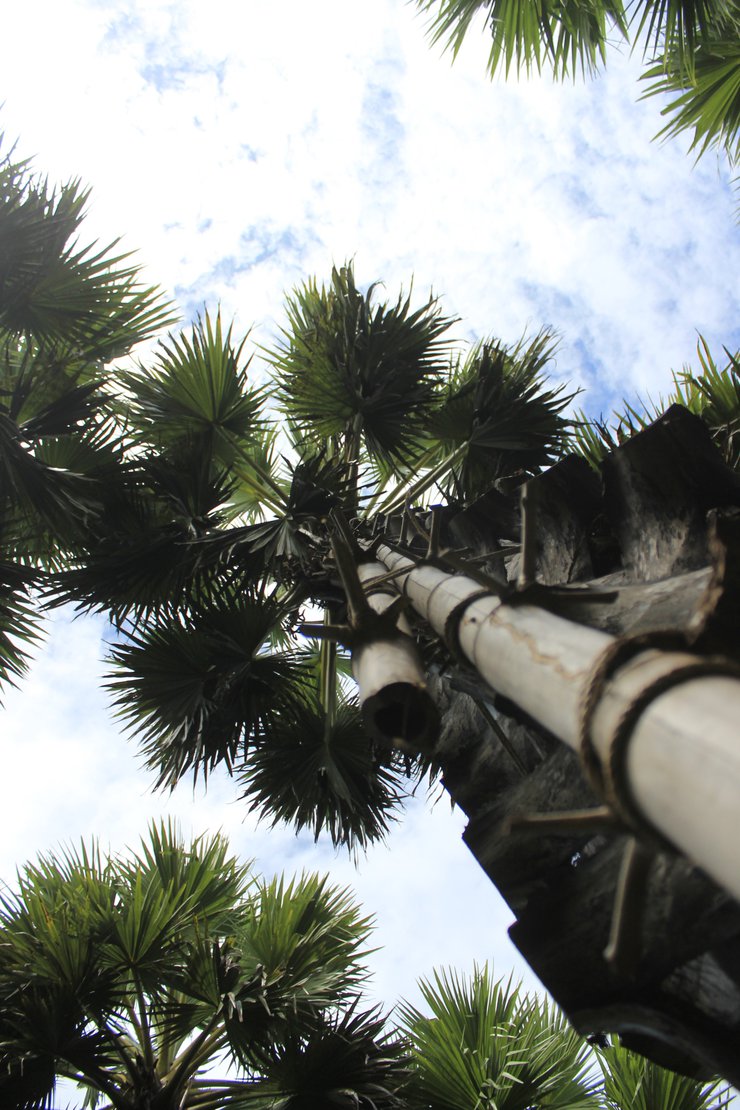Toddy Palm Orchard
Here almost everything is made of palm trees, for example, sugar, palm wine, dishes, clothes, and souvenirs. The process of obtaining palm juice is exciting and quite long.

The worker climbs a 12-15 m palm tree and squeezes young palm shoots. This process takes about seven days.

This method allows the worker to push the juice to the end of the shoot. A week later, he makes a neat cut at the base and ties the shoots to each other. Then he connects a special bamboo pipe for the juice collecting purpose. It is essential to clean the shoots from small flowers so that they do not absorb the juice.

20-30% of the plantation allows collecting about 100 liters of concentrated juice in one season. One palm tree gives about 5 liters per day.

There are only three workers on the Uncle Tanom Palm orchard plantation, and during the working season, two more workers come to assist them. Palm juice is very similar to cane.

All the sweeteners are made from young fruits, and ripe fruits the local citizens eat as fresh dessert. It tastes a bit like coconut so that you can eat these fruits a lot at a time.
Traditional Thai Kite
In the Tam Rong community, you can not only visit the kite festival but also learn how to make it. We visited a family that has been making kites for many years.

So we made a simple, easy-to-make, and easy-to-fly, amazing kites without assistance. It is a pity that it can not be brought home.

Interesting to know that there are several types of kites. We made Pakpau. It has a square shape. Another type is Cula, which has a form of a star. A real kite show takes place during the kite festival where teams take part in kite fights in the sky. The task of each team is to catch the opponent’s kite and pull it to the side of own team.

Weaving with toddy palm fronds and Crafting dolls
As you already understood in Phetchaburi province, palm trees are very often used in everyday life, so here you can try the weaving with toddy palm fronds and crafting dolls from the toddy palm’s hard shells.
This is a very exciting activity, especially the weaving with toddy palm fronds.

I was impressed by the skill of the hands of the masters, despite the fact that they are already over 60 years old.

For instance, they can make fabulous baskets in just one hour.
Mr. Lung Pud is 83 years old. Previously, he worked in a palm grove, but with age it became more and more difficult. He is still devoted to palm stuff. Now he makes various souvenirs from solid shells of palm trees.

By the time we arrived he prepared a few shell bases and we were able to make a turtle. It may seem like a regular souvenir, but given the open spaces in Thai houses, it can be used as a paper holder.

Every Saturday Mr. Lung Pud gives a master class for all interested people.
Traditional Tai Sugar
It is the most fantastic method of production that I have ever seen! First of all, the extracted palm nectar should be filtered, and only then you can start heating.
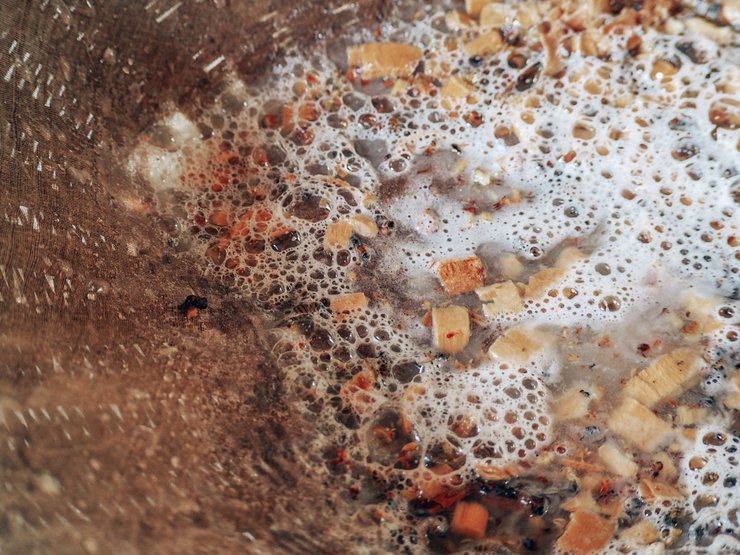
The time of boiling could be different depending on what you want to get, for instance, the juice obtaining process takes around 1,5 hours, and for getting sugar - about 4 hours.
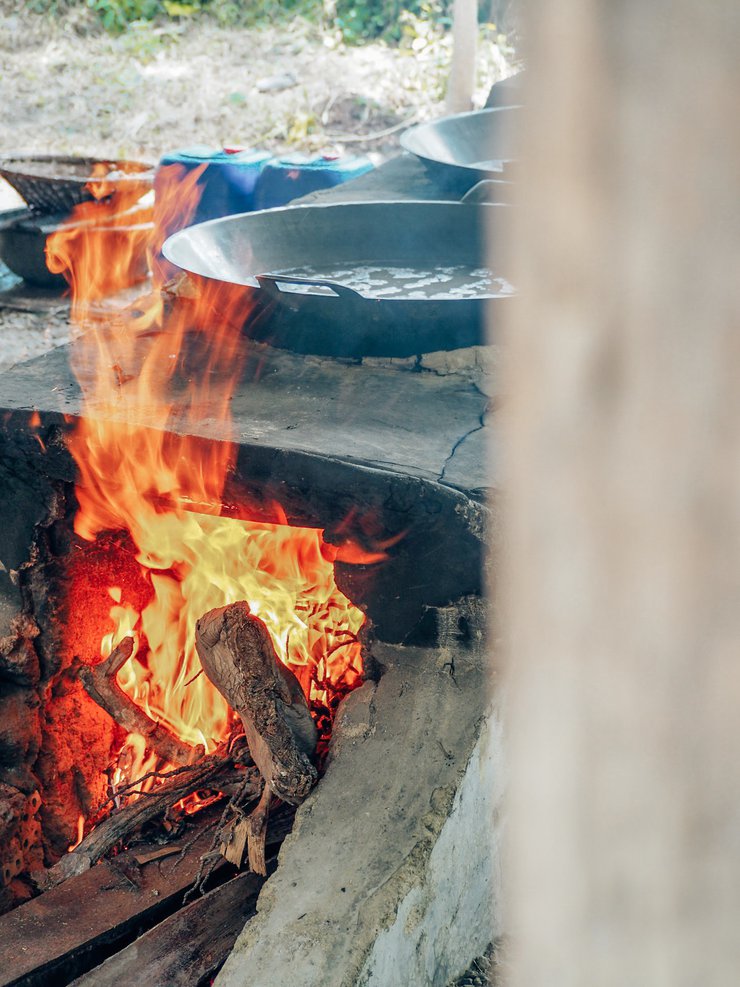
Palm sugar is produced mainly at home by using houseware. The same houseware was used 50 years ago. In this sense, it is real conservation of the traditions!
Salt production and extraction
The Thailand climate allows naturally getting sea salt, through the evaporation. Phetchaburi salt farm fields are filled with seawater.
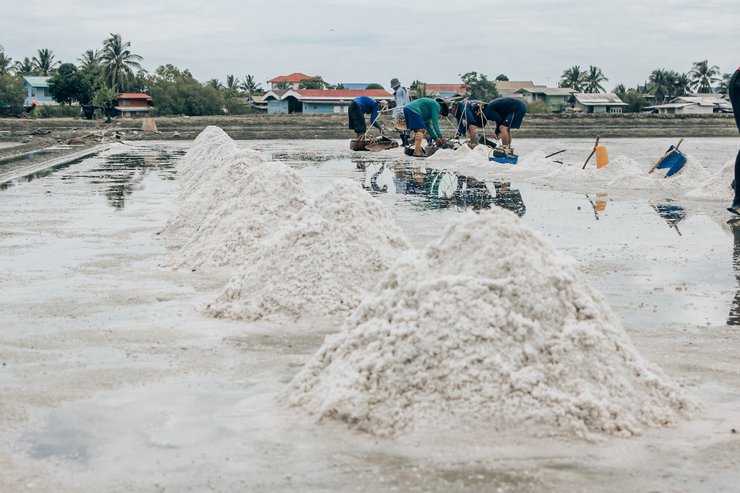
Then this water remains under in open air for about 10-14 days and under the sun's rays with the consequence that evaporation of water occurs. As a result, we can get salt, in the form of an unusual "harvest."

The process of salt extraction is very complicated and consume lots of time.
Despite the fact, Thailand produces about 1 million tons of salt per year. About 1600 kg are collected from one salt farm. All salt farms are processed manually. Сan you imagine how water and salt hurt and damages skin, clothes, and shoes.
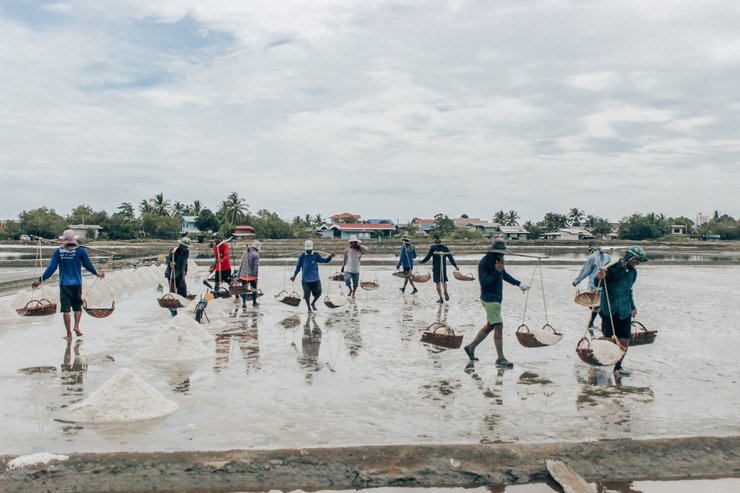
All earned money received from a processed field is divided into all employees. 1500 baht per day! It is perfect money! Besides employees can get their payment assuming that the field is processed.
Crab farm and Whale watching
Thais are very fond of crabs and create farms for their reproduction, thus maintaining a population of crabs in the sea.

Newborn crabs appear already on the 10-11 day. The number of eggs depends on the size of the female crab.
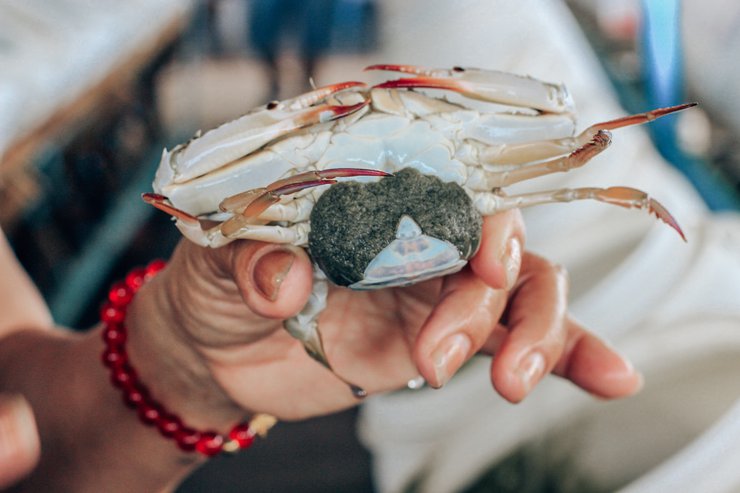
They varies from 1000 for small ones and up to 8000 for large ones. The fact is about 30% of all eggs survive. In Thais opinion, as for Buddhists, it is essential to give life to others. Therefore, we went to the beach together to let out small crabs in the sea.
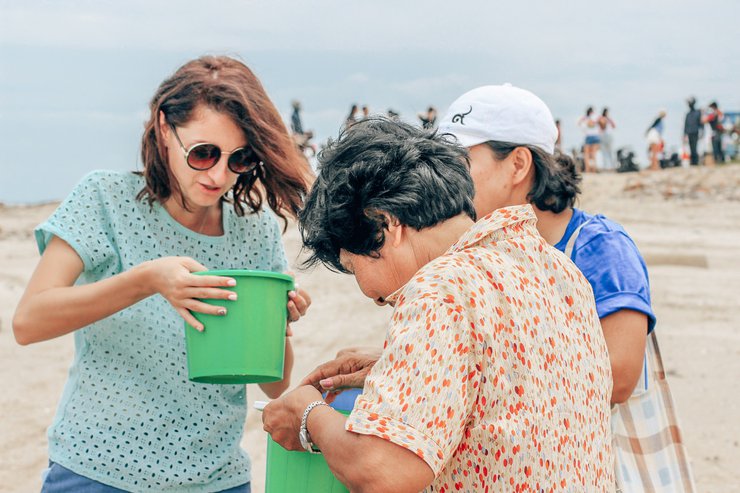
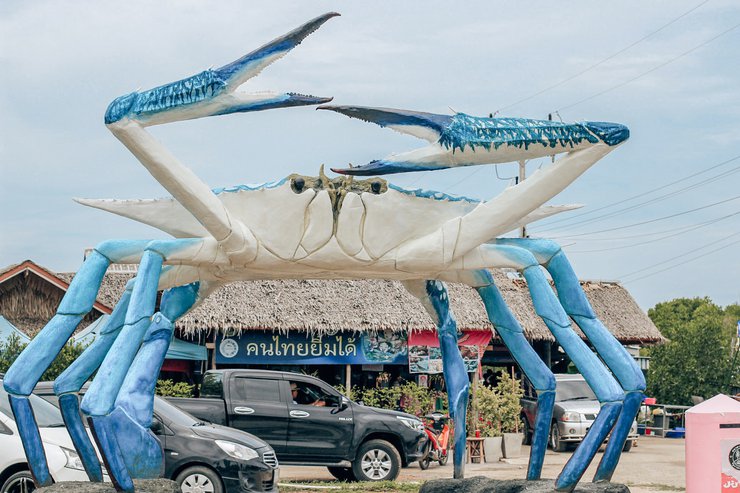
I found out that you can watch whales in Thailand. It was a discovery for me. Ships sail from a crab farm. The landmark of finding this place is a giant blue crab by the road and the Laem Phak Bio Project treatment plant.
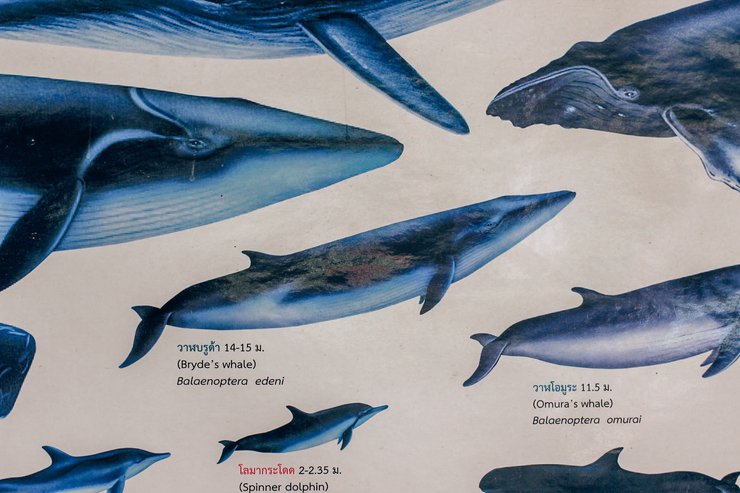
The whale watching period in Thailand is short from September to November, but the peak is in September and October. The cost of boat renting for ten people is around 5,000 baht. The total amount can be divided into all comers.
Beaches of Phetchaburi Province
The beach with golden sand is located about 10-15 km from the Phetchaburi city.
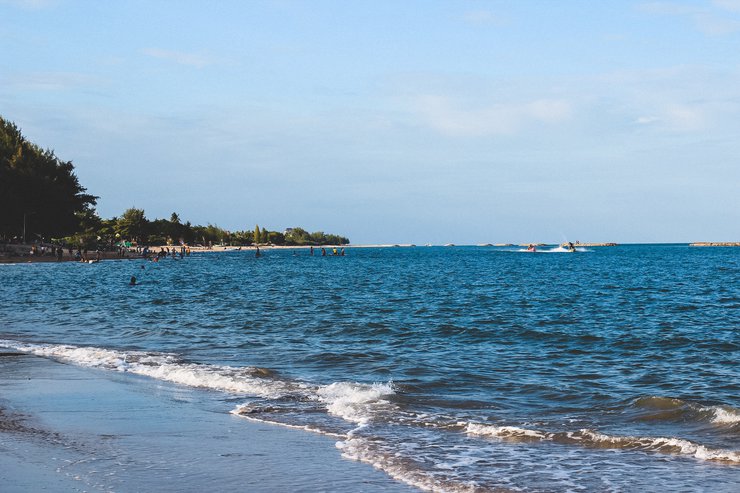
The citizens call this beach Chao Samran Beach, that means "The beach of Kings resting." The kings chose this place for their holiday a long time ago.

King Rama VI had been mesmerized by the fabulous nature of Phetchaburi for that reason he built a palace by the sea and called it Hat Chao Samran Palace.

Seaweed Farm
Have you ever eaten "green caviar"? In such a way, Thais call the organic sea veggies, by the way, I compared it to taste with red caviar.
Seaweed is quickly becoming a unique staple ingredient in our food. Known for its umami flavour and as an alternative to salt, Michelin-star chefs have embraced the range of edible seaweeds as an exotic addition to ocean-inspired plates. Seaweed is high in protein, omega oils and a range of vitamins and minerals, so it’s easy to see why it is growing in popularity among our health-conscious society.
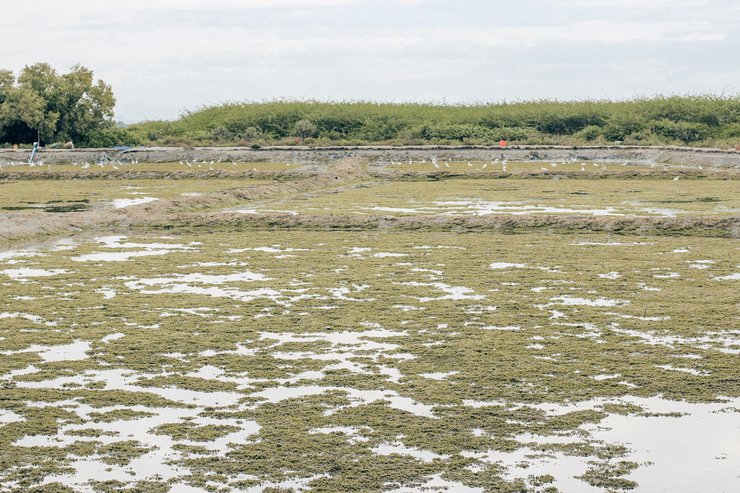
Seaweed also absorb dissolved nutrients from the water, which can decrease eutrophication caused by water pollution.
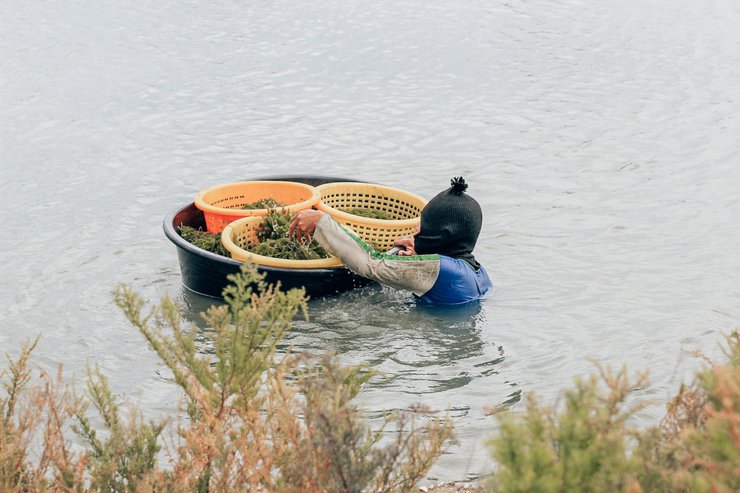
As I told before in the Tham Rong Community and Phetchaburi Province you can find the gorgeous nature, openmind people, local food and ancient architecture, but I recommend you to learn more about this destination from the article "What I most like at Tham Rong Community (Phetchaburi Province)".
Kate Birska
Monday, July 29, 2019 1:02 AM

